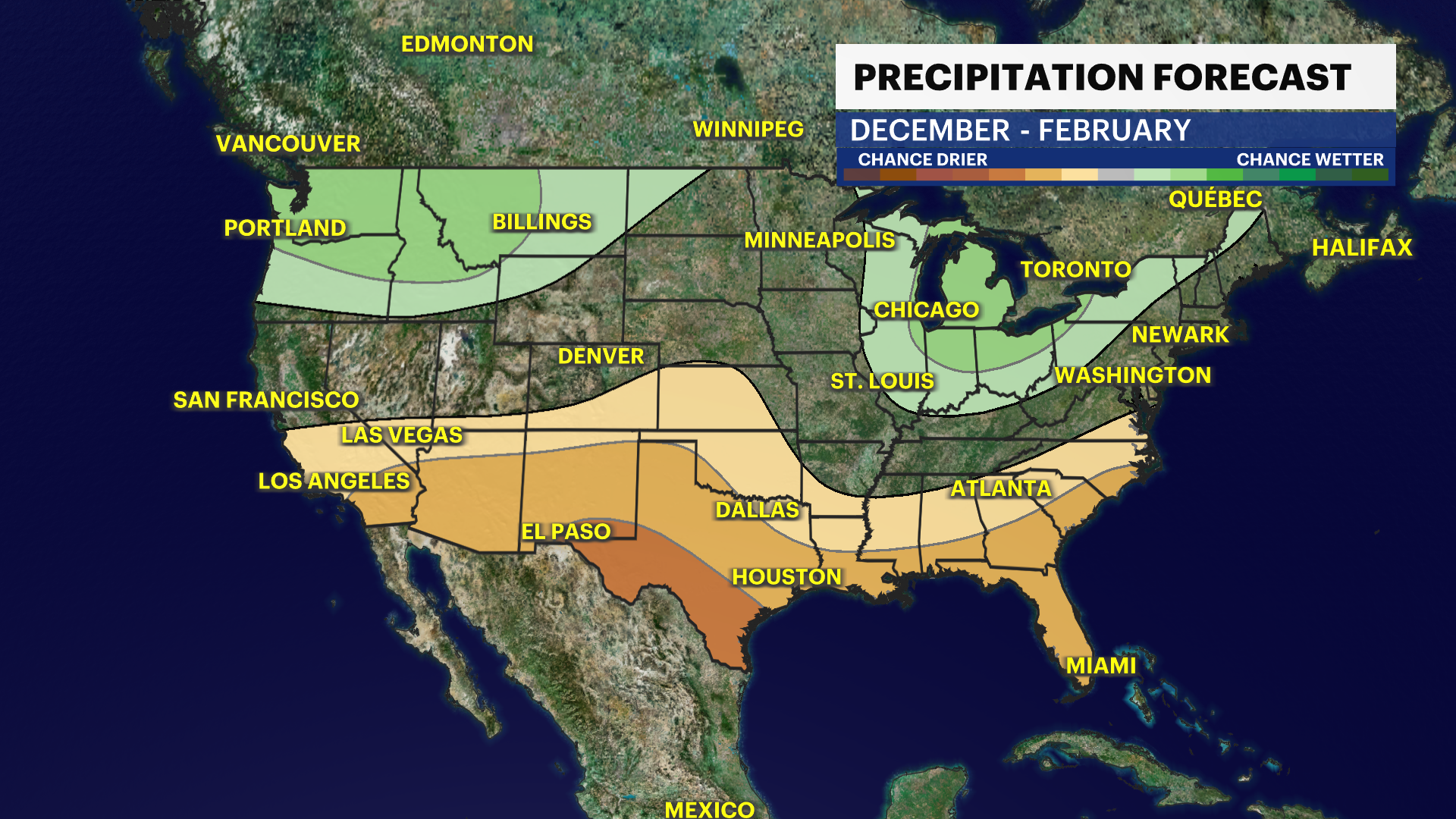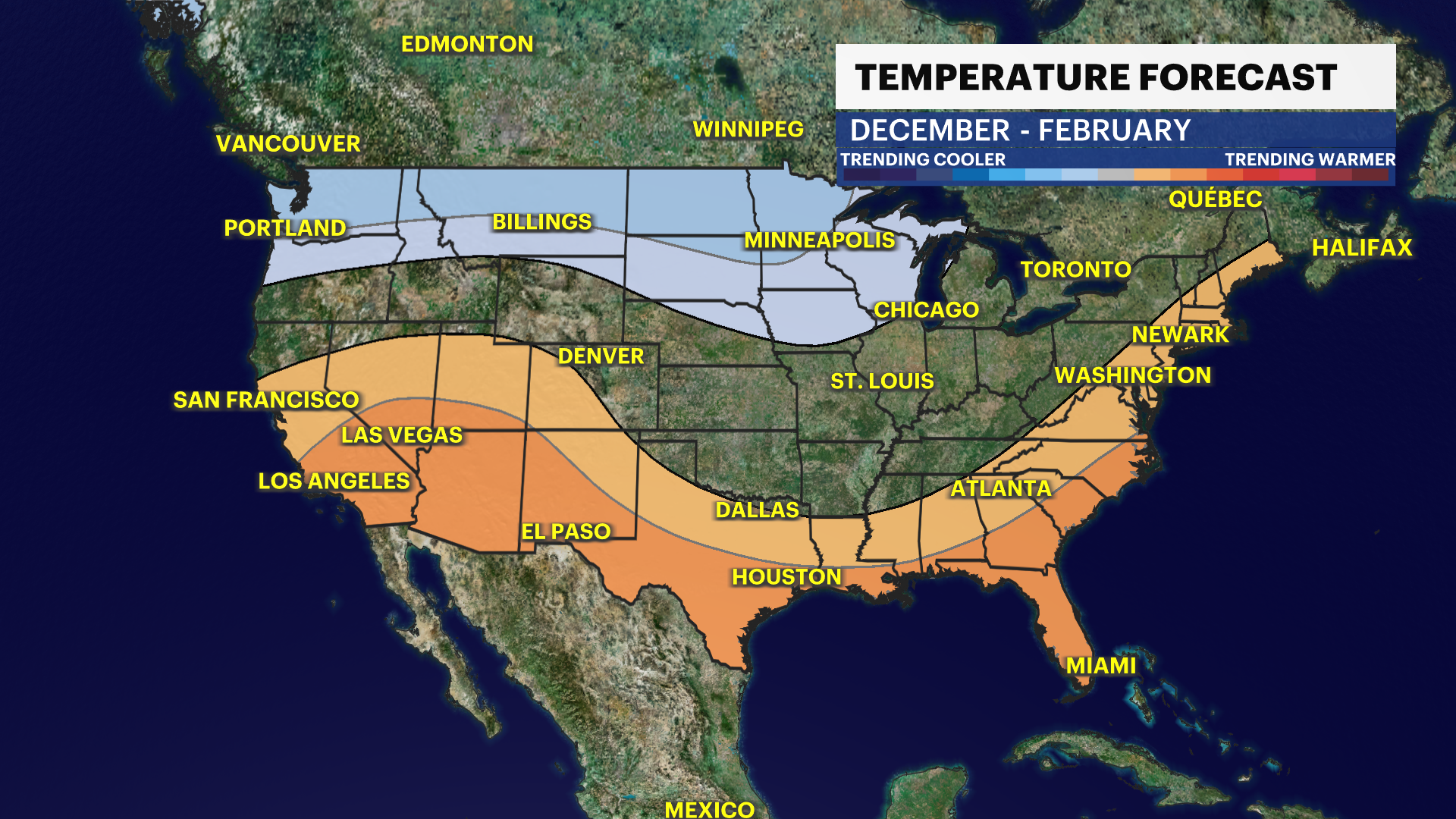More Stories
The National Oceanic Atmospheric Administration released its winter outlook on Thursday.
The report seems to indicate that there will be a moderate La Niña this winter and that may have some impacts on winter weather around the country.
It’s just one factor of several that go into a winter seasonal forecast. There’s a chance it may end up similar to last winter, although last year was a very odd year for snowfall.

In a nutshell, a typical La Niña pattern may mean warmer-than-average temperatures in the northeast and average precipitation. This will be the third consecutive winter for La Niña, which has only happened two other times since 1950. The last time there were three in a row was from 1998-2001 and before that back in 1972-1976.

What is a La Niña?
A La Niña refers to the opposite or cooler counterpart to an El Nino/Southern Oscillation Cycle. It’s the periodic cooling of the ocean waters along the equatorial Pacific. When this happens, it creates different rainfall and weather patterns all over the globe. In the wintertime, an area of high pressure sets up over the eastern Pacific, driving the jet stream north there with a trough in the East. Wetter-than-average conditions are created over the Mid-West/Great Lakes region when storms track inland or west. It also means drier than average conditions set up in the south and southwest.
Warmer air gets pushed up the Eastern Seaboard, creating warmer-than-average temperatures for the Gulf Coast and the East Coast. With this type of setup, there is often mixed precipitation or even rain at times locally.
This doesn’t mean New Jersey, or the northeast, won’t see any snow. There is still variability in the forecast which can cause short-term changes in the weather pattern that can only be forecasted a week or two out at a time. If the cold air and storms meet up just right, we can still see a good snowstorm. There have been La Niña winters in the past that still turned out to be quite snowy.
More from News 12
2:28

Fellow athletes mourn champion boxer fatally struck by car in Old Bridge
0:34

Jersey Proud: Jersey Cares to wrap up biggest coat drive this weekend
0:19

Gov.-elect Sherrill meets with NY Gov. Hochul
1:35

Burlington County man charged in deadly stabbing at Linden TGI Friday’s
2:00

Police: Stolen BMW SUV flips; brothers captured after foot chase in Neptune Township
0:26
